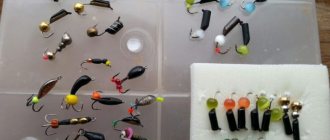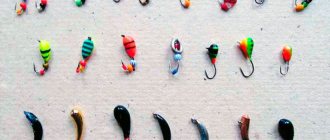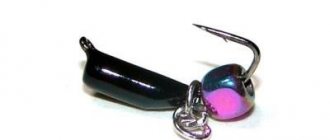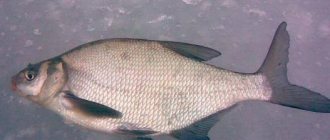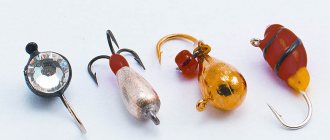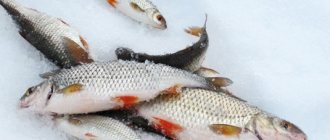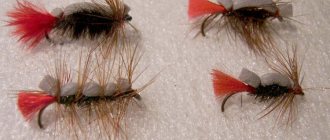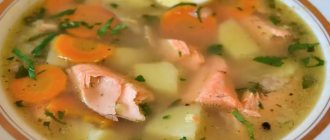Swift caddis flies
If you have the opportunity to fish on fast rivers and streams, especially with a rocky bottom, be sure to pay attention to whether there are fast-moving caddis flies there. Any fish that feeds on insects eats caddisfly larvae with great pleasure, and their share in the diet of brook trout can generally reach 80%. In autumn and winter, grayling feeds on them extremely readily.
The larvae of fast-flowing caddisflies clearly gravitate towards flowing sections of rivers with riffles and even rapids, but they prefer to stay not on the rapids themselves, where the water is seething, but in places with a more or less even flow, without obvious turbulence. Such conditions usually develop at the end of a riffle, and if the reservoir is shallow, then at the beginning.
Another preference is rocky soils. In search of food, the larvae of swift caddisflies constantly move along the ground. They do not build burrows, nets, or any other shelters. These are typical predators, devouring everyone who is smaller in size - for example, they willingly feed on the larvae of Diptera (Diptera) or mayflies (Ephemero-ptera) of a younger age.
Despite the fact that there are a lot of species of swift caddisflies living in Russia and Europe, they are all similar to each other and can be imitated by the same fly. As an “average” version of the larva of the swift caddisfly, I will present to you Rhyacophila dorsalis. The abdomen of this larva is bright green (for this in America it is called Green Caddis), translucent, and the back is olive.
One of the features of this larva, which is extremely important for creating imitations, is the pronounced segmentation of the body. According to a figurative description by Oliver Edwards, this larva looks like a string of beads, with the largest beads located in the center and the smallest ones at the edges.
Flies for different fish
The production of flies for fishing is differentiated. There are flies for grayling, there are for asp, trout and so on. There are never too many flies. There is no universal and most catchy one. Different conditions require different flies. The same fish prefers variety at different times.
For example, it is difficult to select a fly for a single asp. No matter how you look at it, there is a fluffy fly in front of his nose, and he often refuses to take it. To catch asp, try streamers or wet flies. In sunny weather or in the upper layers, he prefers dim baits. But in cloudy weather, shiny baits will be better. Smaller asp specimens bite better on a fly. The video shows how to knit a streamer for an asp
For grayling, the color of the bait is very important. Grayling even distinguishes shades of color. But in more turbid water, light perception becomes worse. In muddier water, baits should be contrasting. The peculiarity of grayling is that it likes to rise to the upper layers, and therefore will prefer dry flies. Since it feeds on small insects, the flies for grayling should be small. The next type of bait for grayling is emergers.
Look at the video of how to knit a caddisfly:
Tenet caddis flies
This is the second family of caddisflies whose larvae do not build houses. They also prefer fast, rocky, oxygen-rich reservoirs, they are also most abundant in the autumn-winter period (another reason to catch grayling and trout in cold water), but, unlike fast-stream ones, they are not prone to vagrancy. They don’t build full-fledged houses, but they make shelters from small pebbles, grains of sand, and twigs, and they braid the entrances to the shelters with a kind of thin nets - snares, for which they got their name.
Larvae of net caddisflies are omnivorous. They spend most of their time at rest, in a C-shaped curve. While drifting, they maintain their arched posture.
Their bodies are also well segmented, but not as clearly as those of the swift larvae. Abdominal segments 1 to 6 bear a pair of distinct leaf-shaped tracheal gills. At the end of the larval abdomen (on the terminal segment) two bundles of thin fibers, reminiscent of two tassels, are clearly visible - these are also tracheal gills.
The color of the translucent abdomen of the larvae of most varieties of caddis flies ranges from pale yellow and brown to dark gray. The back is noticeably darker, often brown. The chest consists of three dark brown, almost black segments. Three pairs of strong dark-colored (almost black) legs are oriented forward.
The body length of older caddisfly larvae is 15-20 mm. They are thicker and “stockier” than the larvae of swift caddisflies.
Caddis fly
Photo of the process of making flies with your own hands
Note!
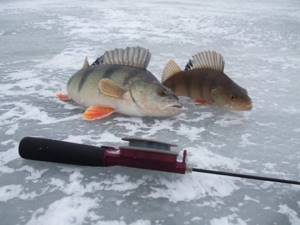
Bloodworms for fishing - secrets and tricks on how to properly obtain, store and attach for catching various types of fish (125 photos + video)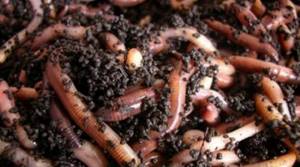
Dung worm - methods of extraction and secrets of catching. How to properly prepare and breed at home (100 photos and videos)

Peas for fishing - methods of preparation, catching, baiting and feeding fish (video + 125 photos)
Read here How to attach live bait - methods of attaching bait to a hook for catching different types of fish (125 photos + video)
Help the project, share on social networks 

0
Caddis flies
Flies that imitate free-living caddisfly larvae belong to the class of nymphs. The common features of flies, the prototype of which were swift and net caddis flies, as you already understood, are the C-shape and well-defined body segmentation. But the coloring and expression of their tracheal gills are somewhat different. These imitations also have other features that are worth mentioning separately.
Hooks. Nymphs, the prototype of which were “free” larvae, are usually crocheted on hooks with a C-shaped curved shank. In manufacturers' catalogs, they are usually called Grub ("larva") or Shrimp ("shrimp"). Typical examples of such hooks are KAMASAN BI05 and B110, TMS 2457 and 2487B1, HA-YABUSA 384, CLIMAX 620B, PARTRIDGE K4A.
It is advisable to tie a caddis fly on such a hook because the curved carrier well conveys the body shape of a free-living larva. Carried away by the current, it usually bends like the letter C, becoming slightly shorter and thicker. Crawling along the substrate, this “bum” moves like a caterpillar, which again matches the shape of the Grub and Shrimp hooks well. However, “desirable” does not mean “required.” Flies that imitate our “homeless people” can be successfully tied on hooks with a moderately curved shank - such as TMS 2302, TMS 2312, KAMASAN B220 Nymph. Also suitable are C-shaped hooks with a humped shank and a raised ring, designed to imitate caddis fly pupae (often referred to as Caddis Pupa) - type TMS 205B1.
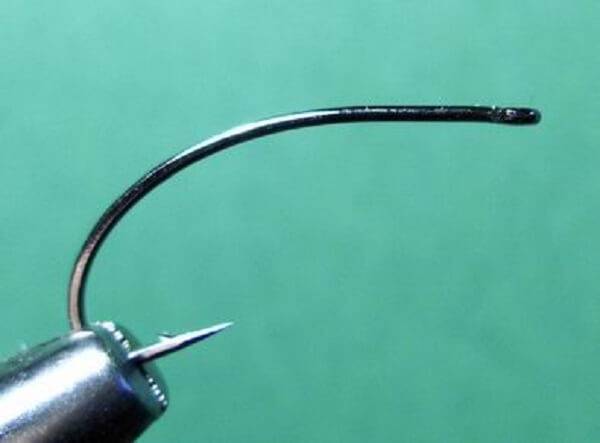
Partridge 15BN Klinkhammer
Flies also work well on Partridge 15BN Klinkhammer hooks.
There are also more sophisticated carriers - for example, TMS 400T Swimming Nymph hooks with a wavy curved fore-end and a raised ring, as well as TMS 947 B1 with an elongated fore-end, as if pressed in the middle. Some tyers create very impressive imitations on them (however, although these flies are suitable for practical fishing, they have a serious drawback: due to the increased length of the unusually shaped forend, the hooking angle is such that the fish often gets away).
C-shaped hooks with a short shank of the TMS 2488 type are usually used for tying artificial eggs, but the flies on them turn out to be quite chunky and disproportionate.
So which is better to choose?
I recommend hooks with an extended C-shaped curved shank. Their ring can be bent either downwards (TIE-МСО 2487 Bl, HAYABUSA 384) or upwards (HAYABUSA 371, TMS 206 B1, KAMASAN B420 Sedges). Both are suitable for our purposes.
The hook can be made of wire of different diameters - thin, normal or thick. By varying the thickness of the hook, you can achieve the desired wiring horizon. This is relevant when fishing with hanging flies that are part of complex rigs (heavy flies at the bottom, light nymphs closest to the angler; dry end flies, light nymphs closest to the angler, etc.).
Unlike dry flies, which should only be tied on flat hooks, for nymphs that imitate “free” larvae, you can use hooks with the tip slightly bent to the side. It is believed that such hooks hold fish better, although they look somewhat lopsided.
Hooks are usually black or bronzed. If you are knitting an attractor bait and intend to resort to provocative colors, you can use a gold (like KAMASAN B100G) or silver hook, but this is rather an exception to the rule.
As for the size of hooks, the best choice is No. 12. You can safely tie on them - caddis flies of this “caliber” can be found in any body of water. If in your area the fish bite on large flies and there are large caddisfly larvae in the reservoirs, it makes sense to knit imitations on hooks No. 8-10. Hooks smaller than No. 14 should not be used.
The losses of the nymphs in question during fishing can be significant, since they are in high demand among fish. And if so, these baits should be as simple as possible to make and you need to knit a lot of them, and in different colors.
- Colors and colors. Most imitations should be done in natural colors, that is, green-brown with elements of black and gray.
However, as we know, rules are meant to be broken. This principle also applies to imitations of free-living caddisfly larvae. Well-known award-winning Czech fly fishermen Jaromir Karafiat and Miroslav Machacek told in this regard how some crazy guy was found in the Czech Republic who began tying classic “Czech” nymphs in bright colors, using almost fluorescent colors. They laughed at him, but after this innovator won several major competitions in a row (and Europeans take fly fishing very seriously and as a sport), they began to respect him and also began to breed “Chernobyl caddisflies.” They still knit to this day.
Caddis flies, made in bright colors, can be very useful when fishing in brown-peaty or simply muddy water, and it is always useful to have them in your arsenal.
There is also a compromise solution, when the entire fly is knitted in a natural color scheme, and a bright insert of a contrasting, catchy color is placed in the center of the body - red, orange, yellow. Most often it is made on the basis of dabbing, sometimes an orange or red bead is used.
In one of the old issues of the English magazine Fly-Fishing & Fly Tying, a whole article was published devoted to imitations of free-living caddis flies with an orange trigger point. The author argued that such a solution often has a simply irresistible effect on fish.
Classification of flies
I also want to clarify for those who are encountering this type of bait for the first time that there is a division of fly fishing flies into several types.
There are flies:
Dry - which must glide on water, they are similar to representatives of insects gliding on the surface of water:
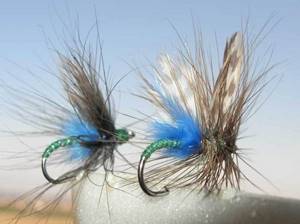
Dry fly
Wet - which will resemble a drowned fly:
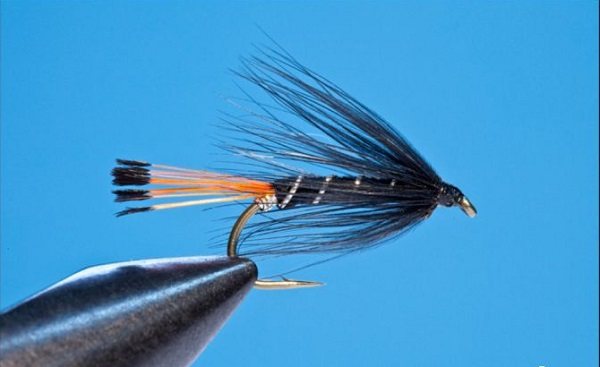
Wet
Nymphs are larvae or invertebrates crawling on the bottom that live in water:

Nymph
Emergers are insects in a transitional period that are preparing to become adults.
Streamers are baits similar to fry and shrimp that frolic in the upper layers of warm water:
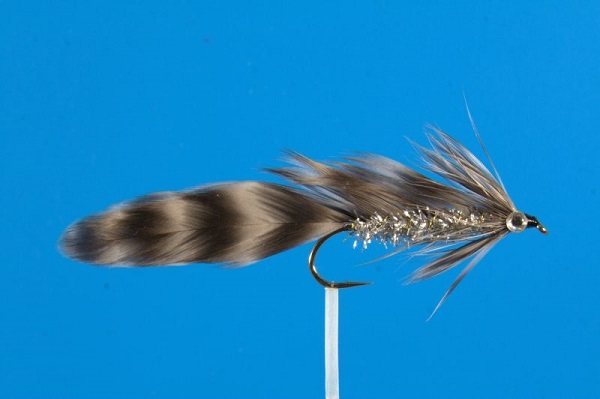
Streamer
Fantasy - insects that do not exist in nature, which appeared only thanks to the author’s imagination, but this makes them no less catchy:

Fantasy
We watch the video and tie the “Alexandra” fly, you can use it to catch ide, chub, asp:
